Tire sidewall will often encounter punctures, tearing, and cracks, bulges, especially with torn or chipped car tires. It can cause high safety and lead to serious consequences. So, when the car tire is torn, sidewall tire damage, how should the drivers handle it? Fix or replace the new tire? Please refer to the article below to learn more about this issue.
Tire sidewall damage
Contents
Tires are the only part of the vehicle that is in direct contact with the road surface. Therefore, the failure of car tires due to external impacts often occurs. Many drivers are forced to change a new tire even though the tire is not yet time to change.
Sidewall tire damage is tire damage that includes problems and defects in the sidewalls of your tires, not the tire tread. Signs of damage to the sidewalls of car tires such as cracked tires, torn tires, or bulging tires.
For tires that are worn, old tires, or have a large tear, you should change the tire at this time. Because the tire is a very important part, and the hip tear is too large, the serious tire bulge is not handled, it is very easy to lead to an unexpected tire explosion.
If traveling on the street at a slow speed, it will be okay. But when you have to go on the highway, it will be very dangerous. In such cases, you should replace the tire with a new one, to ensure the ride quality and safety yourself.
There are many causes of car tires being torn, chipped, or bulged such as:
When you have an accident, you often harsh brake, causing the tire to rub against the road surface strongly, or the impact causes the tire to wear quickly and tear.
When using tires that are past their age, the sidewall rubber is aging. Tires that are exposed to sunlight, oxygen, pollutants in the air, water, dirt, etc. for a long time will cause aging, causing the tire to crack and appear crow's feet on the sidewall of the tire.
Being cut by rocks, collapsing elephant holes, and potholes are also the causes of broken tires. It causes the rubber cushion inside the tire to be compressed and tight. The outer tire shell is scratched, reducing the life of the tire. If the impact is too strong, it can lead to an immediate tear or explosion of the tire.
Under-inflation causes the tires to be under-inflated, all of which cause the tire to wear quickly, the tire is aging quickly and easily torn. In particular, when the tire is not inflated to the correct pressure, the internal and external components of the tire such as rubber, steel, etc.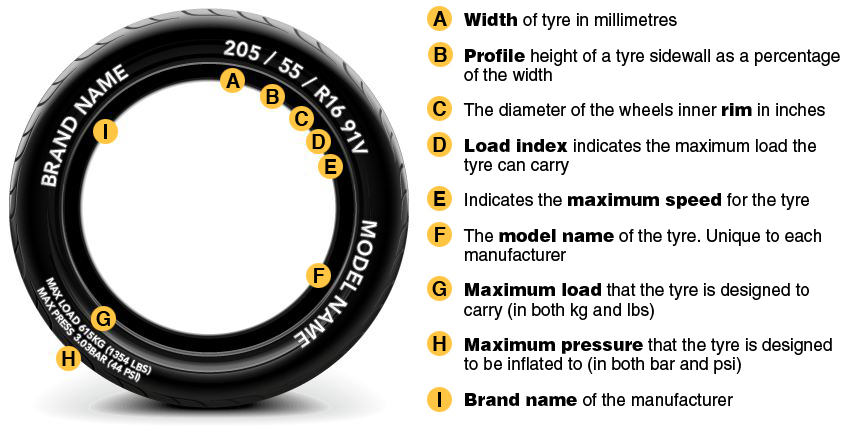 will exceed the allowable limit of the tire.
will exceed the allowable limit of the tire.
Overloading has inadvertently placed the tires in the “maximum load limit” condition. At this time, the heat generated during friction with the road surface and moving through convex and concave roads will push the tire's endurance to the limit, and the pressure is also very large, creating a force on the wall of your tire, which is really dangerous because you may be sitting on slow-explosive bombs. Therefore, the situation of car tire burst is inevitable.
With daily travel on dusty roads, collisions, hitting a curb or unexpected incidents can all leave marks on the surface of the tire sidewall.
Tires that are torn, bulging, or cracked can be a common problem for many drivers. But not everyone understands and knows how to handle when a car tire is torn, bulging, or cracked. Depending on the extent and location of the tire tear, there are different ways to handle it.
In case a car tire is torn, bulged, or cracked in the tire sidewall, this is a very dangerous case because the position of the tire sidewall is under great pressure when moving, so you need to replace it immediately. If not replaced, it is very easy to lead to sudden tire explosion, very dangerous to the occupants of the vehicle and to those in traffic.
Here are some tips from experts and manufacturers to help minimize tire damage:
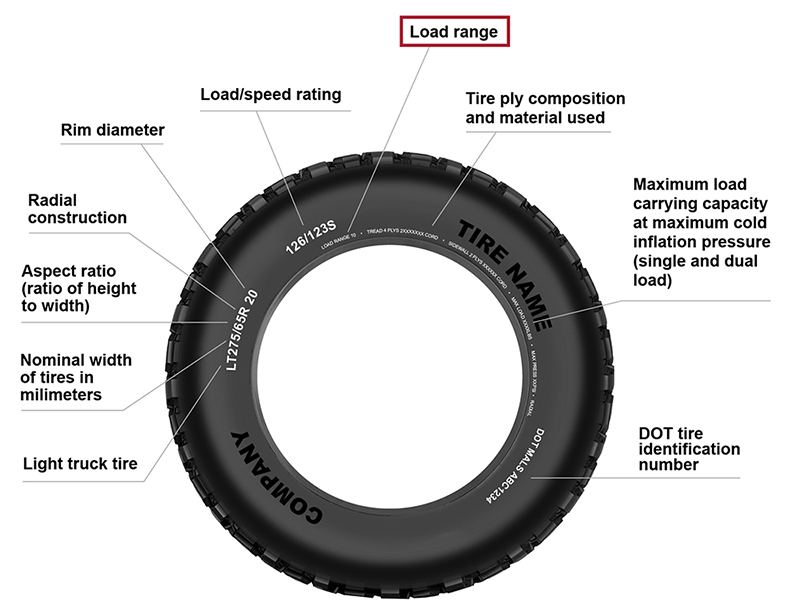

Hopefully, the above article can help you understand more about the causes of car tires being torn, cracked, bulging, causing damage to the tire sidewall and how to handle it as well as notes to avoid the tire sidewall damage. If you have problems with tires in particular or any problems with cars in general, go to the repair center for timely advice and repair support.
But as with any vehicle components, tires are not immune to damage. And there are damages that are beyond repair. One such damage is within the tire sidewall in a form of bulge, cuts or chipped off rubber. So it begs the question, “how much sidewall tire damage is too much?”
To determine how much sidewall tire damage is too much you need to check the threads in the area of damage. If you can see the threads or the radial cords, it’s time to replace the tire. These threads are located 0.125 to 0.188 of an inch beneath the surface of the sidewall.
What's In This Guide?
Any relevant issues or deficiencies you encounter within the sidewall of your tires, may it be on the inner or outer side of the wall can be considered as sidewall damage. This is a very serious concern and can lead to a complete tire failure. Having said that, tire replacement is the most sound decision you could ever take to address this issue.
What Can Be Categorized as Sidewall Tire Damage?Since sidewall tire damage is any irregularities found within the walls of the tires, it can be categorized from minor cuts and abrasions, bulging or bubbles, to more severe cases of missing huge chunks of rubber.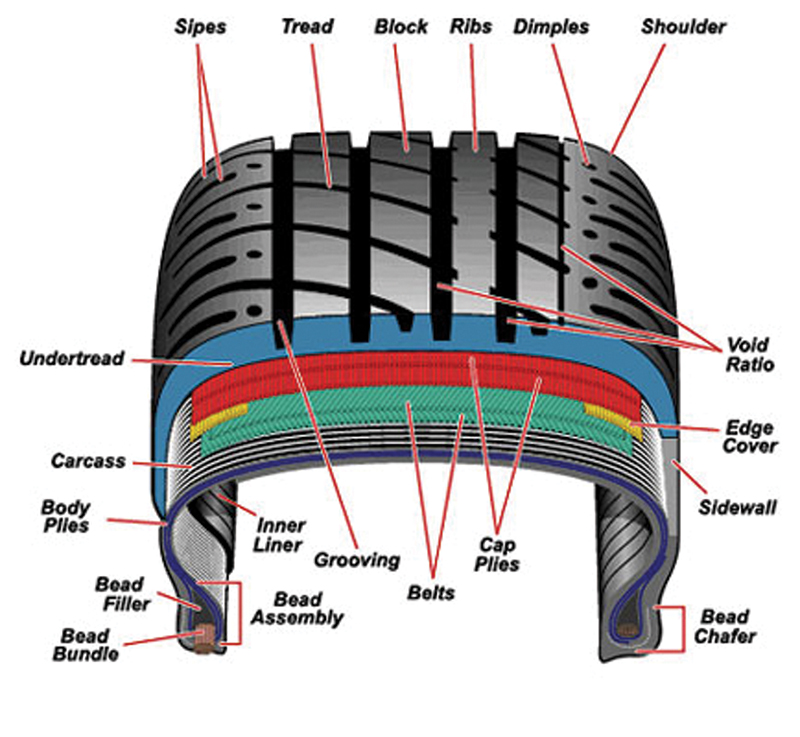
These are portions within the sidewall of the tire that has been chipped off from the tire. Also, it is most likely that the inner cords that hold the structure of the tire are already exposed.
Deep and big abrasionsAbrasions caused by hitting a curb or running on a deep pothole will vary their size depending on the impact. These can range from a slash-like appearance or rough scapes to some extent. However, regardless of the size, these abrasions should not be left unnoticed.
BubbleA sidewall bubble is a bulge protruding on the side of the tire caused by high-impact damage such as hitting a pothole, running into a curb, or driving too fast over speed bumps. Like any other sidewall tire damage mentioned, you shouldn’t ignore it since it can also cause a blowout.
Causes of Sidewall Tire DamageSidewall tire damage can be obtained by one or more factors brought by the driver’s negligence to the quality of the tires. These factors are not limited to the tire age, factory defects and poor quality checks, overloading, under-inflation, and tire wear.
These factors are not limited to the tire age, factory defects and poor quality checks, overloading, under-inflation, and tire wear.
Tires are built to withstand rough road conditions and certain load limits. However, their elasticity, strength, and durability don’t last forever. The majority of tire manufacturers declare an 8 to 10 years lifespan from the manufacture date.
After such, the rubber components will become brittle and dry, the inner plies that hold them together weaken, and eventually, their parts will start to fall apart.
Under-inflationWhatever the type you’re using, or regardless of your frequency using it, tires deflate by themselves even in normal conditions. That is why a regular air pressure check is essential for your safety and tires’ longevity.
The case of under-inflation can be attributed to the driver’s negligence to regularly check air pressure. Under-inflated tires result in tread and sidewall flexing more due to not having enough air pressure to carry the vehicle load. This puts too much stress on the sidewall that eventually leads to breakage and damage.
This puts too much stress on the sidewall that eventually leads to breakage and damage.
There will be cases more prevalent on lower quality tires wherein they skimp on important tests before rolling off the factory. One of the classic examples is regarding the speed rating. Skipping the process of thorough checking for the proper speed rating, these poorly rated tires have the tendency to overheat and affect the sidewall integrity during sustained high speeds.
OverloadingOverloading your vehicle beyond its prescribed limit puts too much stress on your suspension system and ultimately on your tires. Too much weight causes them to flatten, or even explode as air pressure builds up on the sidewall plus the heat generated by friction while moving. Not to mention, overloading is also one of the culprits of compromised handling as this prompts the vehicle to wobble or wiggle from side to side of the road.
Tire wearTires that have significant wear on them are more likely to overheat faster than normal, and this overheating can result in a blowout. Additionally, the worst thing that could happen is when the reinforcement that maintains the shape of the tires was already showing up at the sidewall, and accidental hitting to the curb will definitely end up with a damaged sidewall.
Additionally, the worst thing that could happen is when the reinforcement that maintains the shape of the tires was already showing up at the sidewall, and accidental hitting to the curb will definitely end up with a damaged sidewall.
If you notice that your tire has any sign of sidewall damage, you should have it replaced right away! Throw in that spare tire sitting on your trunk and proceed to the nearest tire shop to purchase a new one. You might want to consider calling for roadside assistance if you have concerns with your spare.
You may argue, “It still seems sturdy enough, why need to be in a hurry?”. Just because you can still drive with it doesn’t mean you should. Remember, safety is a priority the moment you turn on the ignition. Sidewall tire damage could cause a blowout at any second and can put you and everyone on the road in a dangerous situation.
Can a Tire with Sidewall Damage be Repaired?Whether the damage is just a shallow scrape, a bulge, or a chipped-off part of the sidewall, you should not attempt to repair sidewall damage as these are beyond repair.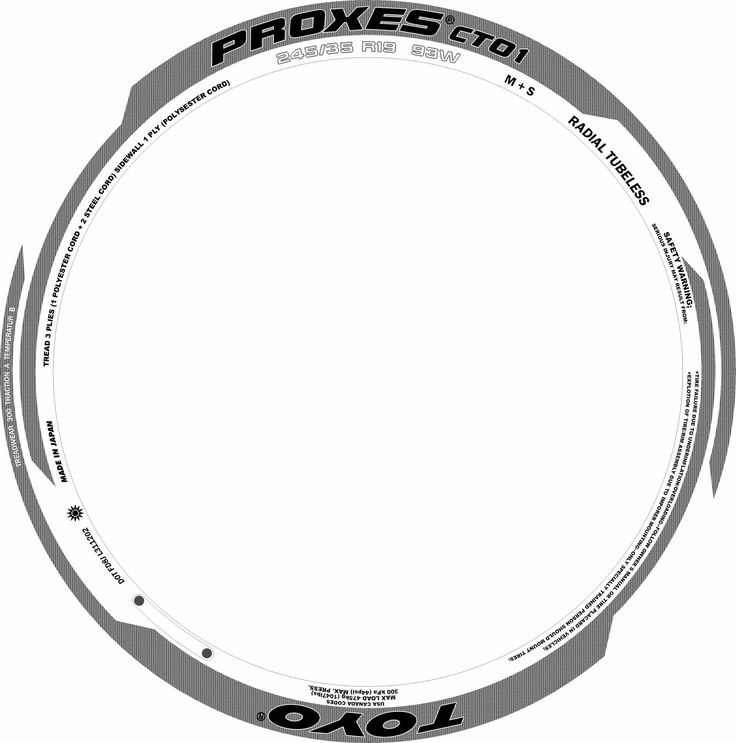 Also, don’t ever think of bringing them to any tire technician as there is an unwritten rule in the industry not to repair, patch, or plug any damage that occurred within the tire sidewall.
Also, don’t ever think of bringing them to any tire technician as there is an unwritten rule in the industry not to repair, patch, or plug any damage that occurred within the tire sidewall.
You can reduce the likelihood of having your tire’s sidewall end up with damage by following the basic instructions. These include regular checking of air pressure at least once a month, avoiding road hazards, only driving with recommended load limit and speed rating, and lastly, having them checked by tire experts should you feel something is not right with your tires.
Check air pressure regularlyYou should have them check at least once a month or if you see any visual cues that they may be deflated. Additionally, you should conduct a cold tire pressure reading since the air pressure varies with temperature changes.
A good practice is to always have a tire pressure gauge paired with a portable inflator that can be powered by your vehicle’s power outlet. These tools don’t take up too much space and can even be stored along with your basic repair tool kit.
These tools don’t take up too much space and can even be stored along with your basic repair tool kit.
It is essential that you also know the basics of tire information reading. The code embossed on your tires does not only mention the size itself, it also indicates the speed rating recommendation. Additionally, the tire information sticker on your vehicle door frame clearly states the load limit with the recommended tire air pressure in psi.
Avoid road hazardsIt is best to plan your route ahead of time. Steer away from areas with ongoing road rehabilitation or repair since these are home to a lot of construction debris such as nails and other pointed metals, as well as sharp stones that may cause abrasions in the sidewall of your tires.
Also, take a look ahead for potholes, and be careful when maneuvering near a curb not to draw too close or you’ll scratch your tire’s sidewall.
Tire technicians and experts have a wide experience dealing with such concerns over the course of their expertise. They may also look for other concerns on your tires that you may miss on inspecting.
Final thoughtsSidewall tire damage should not be treated the same way we fix punctures within the tread via patch and plugs. If you see that the sidewall damage already exposes the threads or cords of your tire, it is time to replace them at all costs.
Wednesday, June 15, 2016 11:00:00 Europe/Moscow
Many drivers experience various types of tire damage during the course of a vehicle's operation.
It must be remembered that the existing repair kits are only a temporary solution. To carry out repairs designed for long-term use of the tire, it is necessary to visit a professional tire center.
The main tire damage on Russian roads is puncture tread . In a smaller number there is sidewall damage , but it is this problem that sometimes baffles the car owner. Why?
In a smaller number there is sidewall damage , but it is this problem that sometimes baffles the car owner. Why?
Let's start with general information about the tire and sidewall damage.
Carcass is the main structural element of the tire, its carcass, which affects strength. It consists of several layers of textile threads fixed on the bead rings.
Breaker - layers of rubberized metal cord connected in a ring and located between the tread and the carcass.
Bead ring - metal threads collected in a single ring, stiffening the bead area necessary to fix the tire on the rim.
Bead is the part of the tyre, consisting of hard rubber and bead ring inside. The bead holds the tire on the rim.
Sidewall (or sidewall) - a structure consisting of layers of rubber covering the frame from the outside and inside.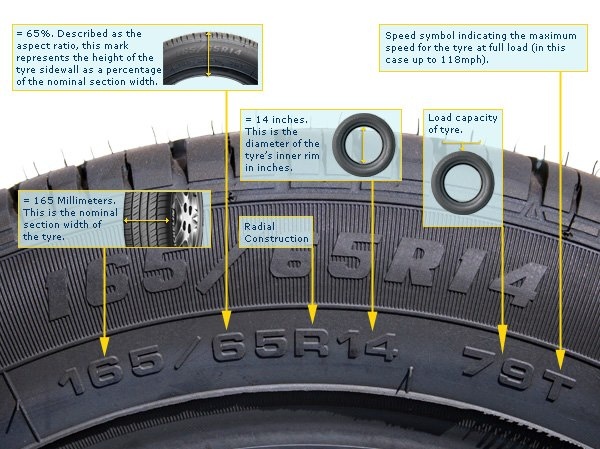 The thickness of the outer layer of rubber depends on the purpose of the tire. nine0003
The thickness of the outer layer of rubber depends on the purpose of the tire. nine0003
Tread is the outer layer of embossed rubber which is the running surface of the tire in contact with the road. It is a thick layer of wear-resistant rubber. Provides tire grip to the road surface and protects the internal structure of the tire.
Cut - damage with a cut in the sidewall rubber and carcass threads. May be accompanied by loss of pressure, but may be superficial, with no escape of air. It is a consequence of hitting the sharp edge of large objects, as well as broken glass, the edge of a curb stone, etc. nine0003
Single sidewall tear is a single through damage to the sidewall, accompanied by a break in the carcass threads. As a rule, this is a consequence of a collision with a foreign object with an obtuse angle, insufficient to cut the surface of the tire.
Compound sidewall tear - Multiple sidewall damage due to heavy impact or pinching. As a rule, it consists of two damages located in the same zone. It can be open and hidden, in the first case it is accompanied by a loss of pressure. nine0003
Swelling ("hernia") - one of the types of hidden damage to the sidewall, has a characteristic deformation of the rubber at the site of damage.
The main question that arises among drivers who have damaged the sidewall of a tire is is it possible to repair the sidewall?
Most of the above damages, and specifically those that are accompanied by damage (rupture or dissection) of the carcass threads, are not repairable! Since each carcass thread is, in fact, a tire rib that maintains the shape and rigidity of the structure. nine0003
And this is precisely the main problem of a radial tire: if even one thread of the carcass on the sidewall of the tire is damaged, it is no longer possible to restore the necessary rigidity.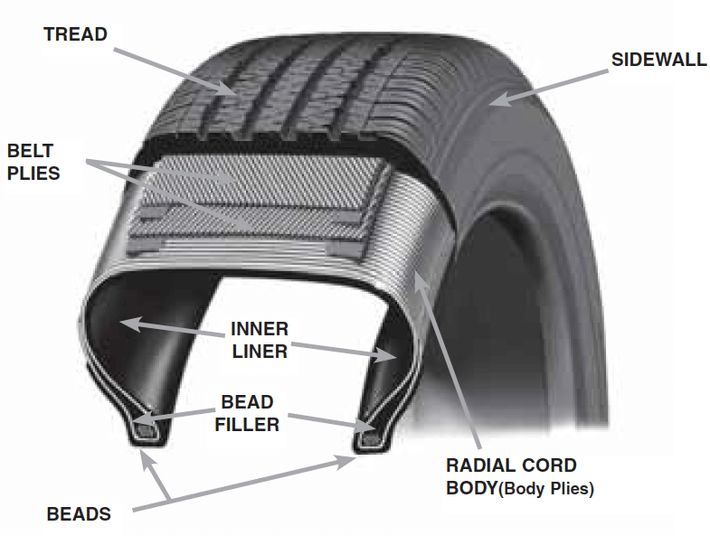 And no matter how well the lateral damage is repaired, the tire will have strength, stiffness, and so on, different from any other point on the sidewall.
And no matter how well the lateral damage is repaired, the tire will have strength, stiffness, and so on, different from any other point on the sidewall.
What should I do if a bulge (“hernia”) is accidentally found on the tire, but there is no way to replace the tire?
On a long trip.
If you want to continue driving, you should slow down (especially on rough roads), because the load on the tire at high speed increases several times.
On the front wheel.
In this case it is better to move the tire to the rear axle. Explosive destruction of the rear tire is dangerous, but still to a lesser extent than on the front, and the driver will be easier to manage in this situation. nine0003
Small hernia.
You must also change the tire to the rear axle and drive very carefully. Since on the go under load, even a small hernia can quickly turn into a large one and collapse instantly.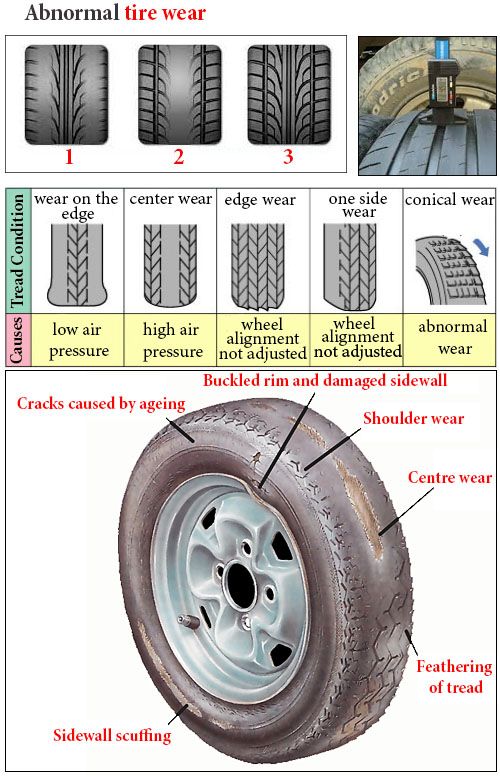
Another season of changing shoes is approaching. And you may remember that on one of the tires after the last winter/summer there is a jamb - a small bump. I don’t want to run to the store for the sake of one new tire. We understand. Or maybe it looks even better if repaired? nine0003
Yes, not every wheel that encounters a nail, rebar sticking out of the ground or a sharp stone off-road is considered damaged. Everything, of course, depends on the scale of the damage and its location on the tire itself. Some are easily repaired, while others are simply impossible to do - the tire can only be sent to the trash.
A bulge on a wheel, referred to by drivers as a bump or bulge, is the most common tire sidewall defect. It appears due to a collision with an obstacle or after falling into a pit, more often at high speed. The threads of the sidewall carcass are easily damaged by impact, and the tire at this point can no longer hold the load and air pressure - swelling appears. A small bump sooner or later turns into a big one, and driving with such a defect is dangerous - the wheel can shoot at any moment. At high speed, this is fraught with loss of control, departure from the road and a rollover. nine0003
A small bump sooner or later turns into a big one, and driving with such a defect is dangerous - the wheel can shoot at any moment. At high speed, this is fraught with loss of control, departure from the road and a rollover. nine0003
The quality of roads in Kazakhstan contributes to the appearance of bulges on tires
Some types of bulges are repairable, although this is a temporary measure. Not a single patch can restore the factory rigidity. Ideally, change the tire.
Special cord patches can extend the life of a tire with a herniation, even if the swelling has appeared on the tread. The sidewall is a different story. If the swelling appeared at a distance of more than 40 mm from the side, it can be repaired. If not, then the wheel needs to be replaced. Blisters on low profile tires are most often non-repairable. nine0003
For maximum safety when riding with a repaired bump, insert the tube. This is an inexpensive and reliable solution. On our market, you can find cameras made in China and Russia, the latter are slightly more expensive, but also of better quality.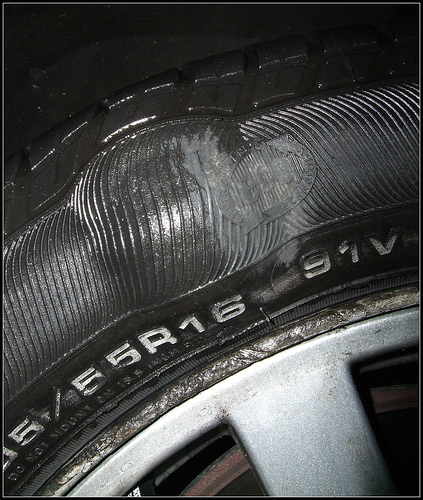
The elimination of a side cut is a serious operation, therefore, as in the case of a bump, you will have to go to the professionals. We need cord patches, fortunately in our time they are of different sizes and with a different number of layers. And if you do it wisely, then you can't do without special tools and vulcanization. nine0003
A cut, by the way, cannot be healed in all cases. If the gap is in the shoulder area of the tire, it is unlikely that anyone will undertake to repair it, since no guarantees can be given here. However, our Kulibins take on even the most difficult cases, cutting out parts of the sidewalls from the tires and even weaving the cord on their own.
Tire overhaul. We would not put such a wheel on ourselves
Low profile tires can be repaired, but more difficult. A tear in the sidewall is easier to seal on tires with a medium or high profile. nine0003
Sometimes a cut is confused with a pluck. This is when the outer layer of the sidewall caught on something sharp, a tear formed, but the frame itself remained intact. There is nothing wrong with that, although the drivers at the tire fitting company successfully repair the cut, for which they take it accordingly.
This is when the outer layer of the sidewall caught on something sharp, a tear formed, but the frame itself remained intact. There is nothing wrong with that, although the drivers at the tire fitting company successfully repair the cut, for which they take it accordingly.
If a piece of rubber remains on the sidewall, then glue it with ordinary superglue (101st). If it came off, then it is better to cover it with raw rubber and vulcanize. Leaving the pluck bare is not recommended, because the tire carcass, often consisting of a metal cord, will quickly corrode. nine0003
In Europe, defective or used tires are perforated before being sent for scrap to prevent their resale and possible operation. But they don’t know that we have such holes on the sidewall patched once or twice
Cuts and hernias are not the only possible damage to the side of the tire. You can also spoil the side ring, in the process of changing shoes, for example.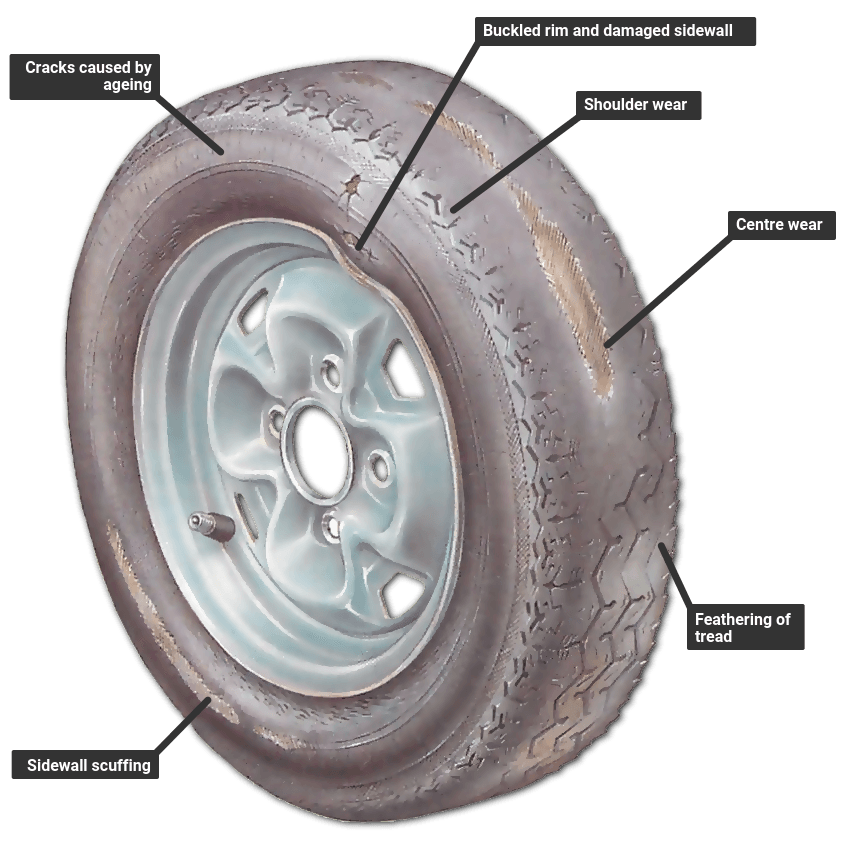 If it’s for garlic, then such a tire is already dangerous. Sooner or later, the tire pressure and the load in motion will start to squeeze the rubber off the rim - a wheel explosion can occur. nine0003
If it’s for garlic, then such a tire is already dangerous. Sooner or later, the tire pressure and the load in motion will start to squeeze the rubber off the rim - a wheel explosion can occur. nine0003
This ailment is repaired if the wire ring - the base - is intact. There are no special technologies and materials to correct this particular problem, but most often craftsmen use a two-component composition for chemical (also called cold) vulcanization. After mixing, the mass is pressed into a fat-free damage. Compound manufacturers recommend waiting 72 hours before mounting a tire. Of course, our masters do not pay attention to this condition - they put the tire right away. And it’s good if the wheel is flat because of this at night in the parking lot, and not on the road. nine0003
If the side ring tears are barely noticeable, but the wheel still deflates, then you can use a special liquid - a bead seal designed to seal a tubeless tire.
These seals have been used in motorsport for some time.![]() In particular, in the American Formula D Drift Series, drivers used compounds to keep the tire on the rim even with minimal tire pressure. Now they are banned.
In particular, in the American Formula D Drift Series, drivers used compounds to keep the tire on the rim even with minimal tire pressure. Now they are banned.
Pay attention to the left rear wheel of the Nissan Silvia S13. Due to too low pressure, it was literally taken off the disk under load
Every schoolchild has faced this problem when patching the inner tube of his bike after hitting something sharp. Repairing a car tire puncture with your own hands will also not be difficult even on the road. But for this you will need a pump (or compressor) and a universal tire repair kit with harnesses. All this is sold at any car market or gas station.
Repairing a tire on the side of the road with harnesses
The process is simple. If we are talking about the front wheels, then in most cases the wheel can not even be removed, it is enough to turn the steering wheel in the right direction, find the puncture site and carry out repairs.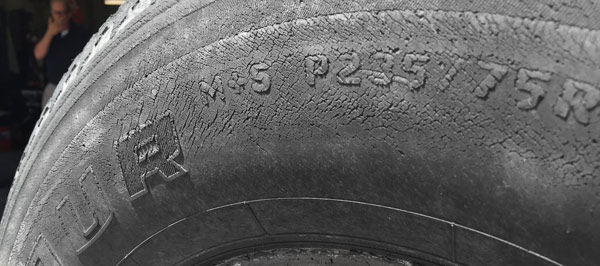 First, the hole is cleaned with a helical awl from the set. The tourniquet itself is smeared with glue and tucked into the eye of the awl, after which it is inserted into the tire hole. With a sharp movement, the tool is removed, and the tourniquet remains in place and clogs the hole. The tails are cut with a knife, but not at the root, it is recommended to leave about 20 mm. The tire is inflated and checked. nine0003
First, the hole is cleaned with a helical awl from the set. The tourniquet itself is smeared with glue and tucked into the eye of the awl, after which it is inserted into the tire hole. With a sharp movement, the tool is removed, and the tourniquet remains in place and clogs the hole. The tails are cut with a knife, but not at the root, it is recommended to leave about 20 mm. The tire is inflated and checked. nine0003
Sometimes a nail or self-tapping screw clogs the hole by itself, remaining in it. If you see a hat in a tread, do not rush to pull it out. While the pressure is holding, move to vulcanize. And sometimes they drive with a screw in a tire for weeks.
Repair of a puncture at a tire shop
Punctures are also repaired with harnesses at a specialized service, although among professionals such repairs are not considered long-term. After a few months, the flagella dry out and can let air through. There are more advanced methods like cold and hot vulcanization.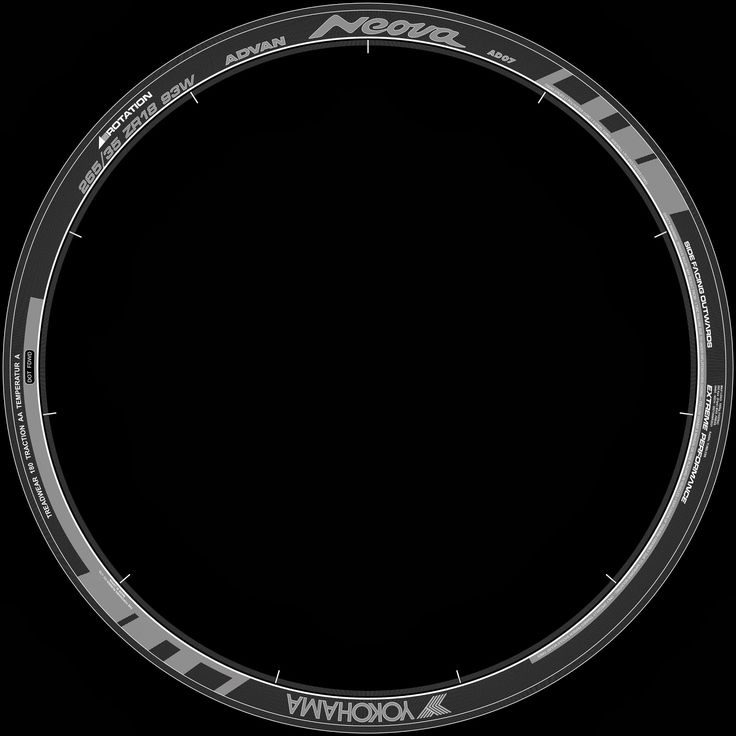 The latter is more reliable. In this case, the hole is sealed with an elastic patch, and the funnel from a foreign object is filled with a special compound. After that, a vulcanizer is put on the tire, it heats up the rubber and solders it. nine0003
The latter is more reliable. In this case, the hole is sealed with an elastic patch, and the funnel from a foreign object is filled with a special compound. After that, a vulcanizer is put on the tire, it heats up the rubber and solders it. nine0003
In addition to the plaster, the puncture is also repaired with special cord fungi. Craftsmen process the puncture site: drill it and treat the surface with a tool to roughen it. Then the repair area is lubricated with glue (it is also called cement) and a fungus is introduced. This is done from the inside of the tire. The cap of the fungus is rolled, and the excess legs are simply cut off from the outside.
Puncture repair with sealant
With the advent of tubeless wheels, and later run flat tires, many automakers began to abandon spare wheels. Instead, repair kits with compressors are supplied with the machines.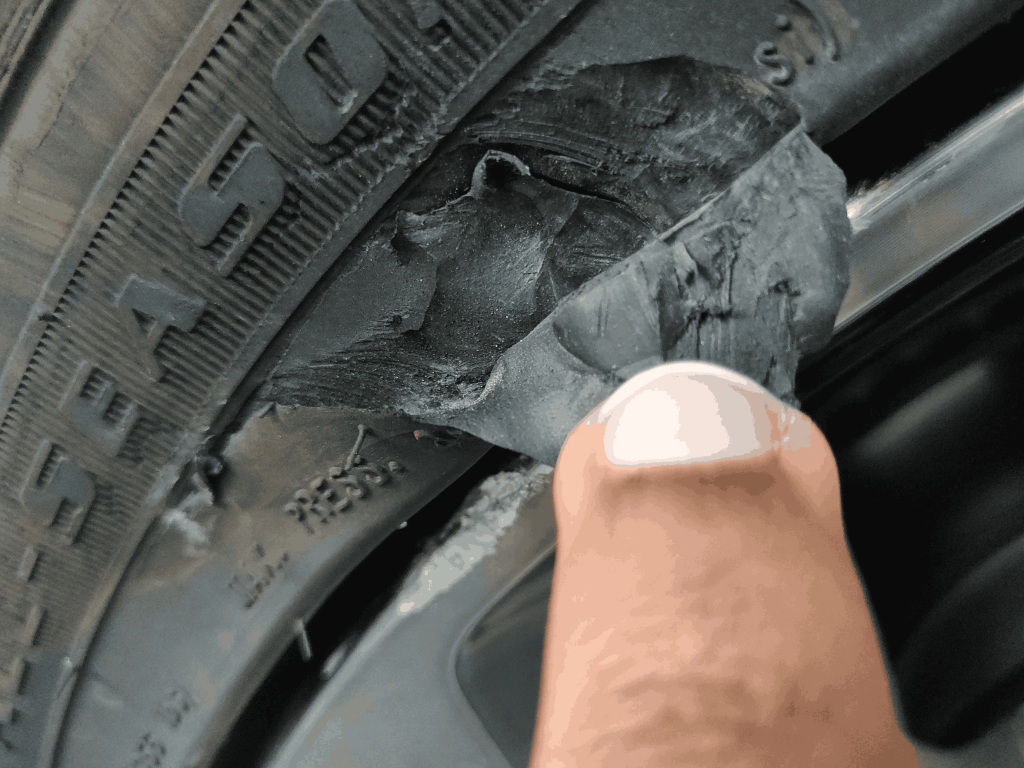 A repair kit is essentially a bottle of pressurized sealant. Later, such spray cans began to appear on the shelves of ordinary car dealerships. nine0003
A repair kit is essentially a bottle of pressurized sealant. Later, such spray cans began to appear on the shelves of ordinary car dealerships. nine0003
This method has not taken root in the CIS, because the condition of the roads makes it necessary to have at least a stowaway in the kit, but it can also be considered as a method of repair on the road.
The car must be jacked up and sealant must be pumped into the damaged wheel through the nipple. Next, you should spin the wheel, then pump it up, lower the car and drive a few hundred meters. If the tire tightness has not been restored, repeat the procedure.
For commercial vehicles, cutting the tread with a special device (regrower) is a common thing. Moreover, such tire retreading is provided by the factory (marked REGROOVABLE on the sidewall) to increase the service life. But there are entrepreneurs who undertake to deepen the grooves in tires for passenger cars. But they are not intended for such an operation. Often used tires for sale are “refreshed” in this way. Be careful!
Often used tires for sale are “refreshed” in this way. Be careful!
What is the threat?
The worst option is that the retreaded tire will shoot out on the road, as the master can damage the undertread layer when deepening the grooves. Such a tire will not be able to hold pressure at some point. There will be a boom! At best, the tire will indeed last a little longer, but is the game worth the candle? We think it's not worth it.
How is cutting done?
A regrower is used to cut the tread. Roughly speaking, this is a large soldering iron with interchangeable tips of various shapes. It goes through rubber like a knife through butter. nine0003
If the tire is for passenger cars, then it is worth taking on a regrower only in one case - when part of the tread pattern was welded with "new" rubber during repair. This is where threading comes in handy in order to restore the grooves and symmetry of the tread.